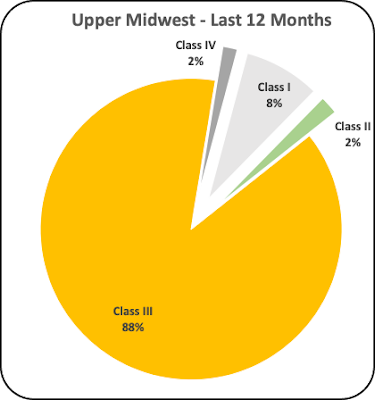Plant-based "milk" sales are growing. Plant-based milk typically has shelf space beside the dairy milk in the refrigerated section of stores and the space rivals the space for dairy milk. While dairy milk continues to decline, plant-based milk is growing. Is the growth of plant-based milk cannibalizing the dairy market for milk? If so, how much is it cannibalizing?
This post will cover the facts in the growth of plant-based milk and where it may be heading in its competition with dairy milk sales. It will also cover the impact of plant-based milk sales on butter production.
Much of the published literature uses dollar value as the common denominator in comparing dairy and plant-based milk sales and gives plant-based milk a 16 percent market share. This published data is based on dairy and plant-based milk sales at 2021 prices. With inflation and competition. those numbers have changed significantly. Plant-based milk is still more expensive than dairy milk, but the pricing difference has narrowed. Consumers do not drink dollar values. That is why the data used in this blog post is based on sales volume in pounds, not dollars.
Charts I and II below are stacked graphs with the dairy milk on the bottom and the plant-based milk on the top. Both charts plot sales in billions of pounds. Chart I covers the actual data from 2013 to 2021. In 2013, plant-based milk had just two percent of the total volume of dairy and plant-based sales. With a decline in dairy milk and growth in plant-based milk, by 2021 plant-based sales had doubled to 4.1 percent of the total.
 |
| Chart I - Sales of dairy and plant-based milk products. |
 |
| Chart II - Sales of dairy and plant-based milk with projections through 2026 |
- One factor is lactose intolerance. There is lactose treated dairy milk that contains the enzyme that can break down lactose for digestion. It is primarily available in whole milk and two percent fat milk. There is no lactose in any plant-based milk.
- Dairy milk does contain cholesterol. Plant-based products do not contain cholesterol.
- Shelf life is another factor that favors plant-based products. They are typically labeled with an expiration date that is longer than dairy milk. Part of that is the limited fat or no fat in most plant-based milks. Dairy milk can develop off tastes more quickly.
- Plant-based milk is higher priced than dairy milk.
- One of the drawbacks to plant-based products is the lower protein content and lower quality protein. If a person is buying their milk for protein, dairy milk is the clear winner.
Is plant-based milk taking market share from dairy milk? Where is it coming from?
Annual U.S. milk sales of skim milk have decreased by 4400 million pounds since 2013. Annual plant-based milk has increased by 929 million pounds to 1979 million pounds per year during this same period.
Whole and two percent fat milk have decreased by less than one percent per year over that last 10 years (Chart III). In total, dairy milk has decreased by two percent per year over the last 10 years. The main loss in dairy milk is in skim and to a lesser extent, one percent fat milk.
 |
| Chart III - Milk Sales by Butterfat |
How does this impact butter churning?
Over 10 years, skim milk sales have decreased by 5000 million pounds per year and one percent milk has decreased by 2500 million pounds per year. As a result of the decreasing sales, there is less butterfat that is removed from this milk, and it amounts to over 250 million pounds of butterfat annually at 2021 production levels.
This amount of butterfat would produce over 300 million pounds of butter annually. In 2021, slightly over two million pounds of butter were produced in the U.S. The loss in butter churned from butterfat that is no longer available from skim and one percent milk is about 15% of annual butter production. Why do we have a butter shortage? This certainly plays a part!
With the continued increase in plant-based milk and a decrease in low fat milk, the available butterfat will continue to decrease. It appears that sales of plant-based milk is partially responsible for this decrease.
Summary
Plant-based milk is cannibalizing dairy milk sales and it is coming primarily from skim and one percent fat dairy milk.
The decrease in dairy milk sales is reducing the amount of butterfat available for churning butter. In turn, this is contributing to shortages in butter churning and the resulting high prices for butter and butterfat.














